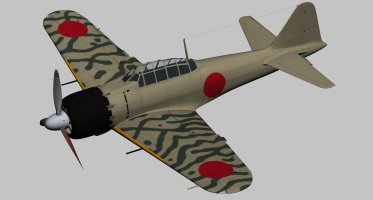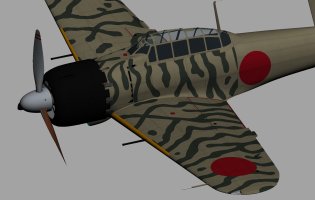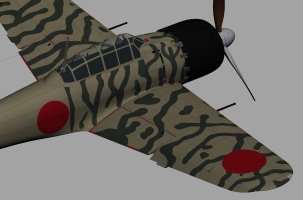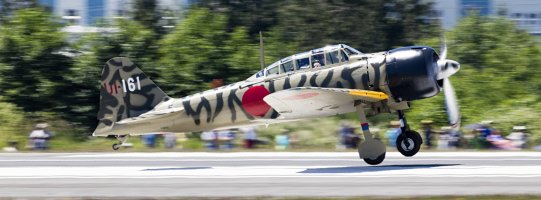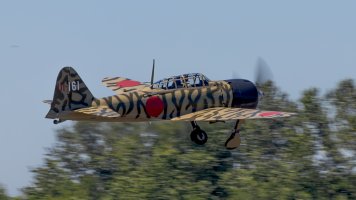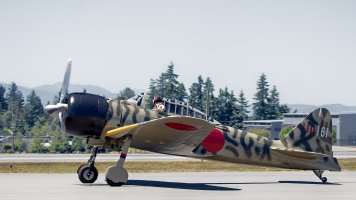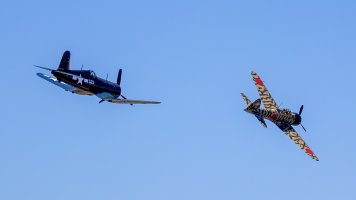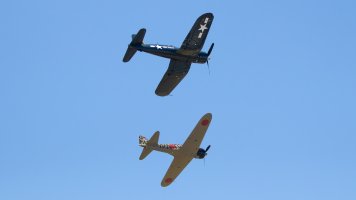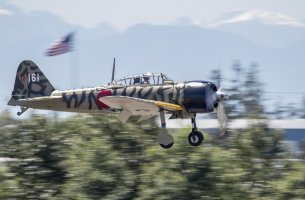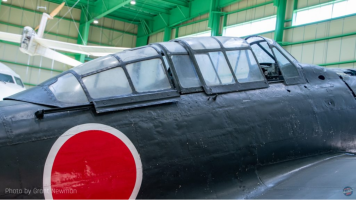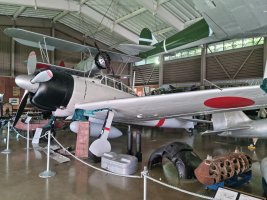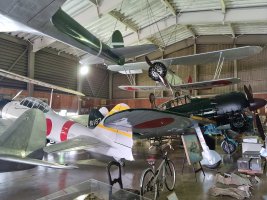I do hope that the FHCAM returns to more flying, soon. They've been doing a lot of maintenance checks and engine runs since the collection was acquired by Steuart Walton, but so-far the only aircraft in the collection at Paine Field which has flown since the acquisition is the Mosquito, which was flown down to the Palm Springs Air Museum, in California, for an event that was held there earlier this year, and then flown back - other than the Mosquito, none of the collection has flown since 2019. That's not including the FHCAM's newly-restored P-38, which was completed a few months ago, debuted at Oshkosh, and now has been based with Steuart Walton's private warbird collection in Arkansas. There have been a lot of rumors that the collection will eventually be relocating to Bentonville, Arkansas, but the Museum won't confirm anything about a future move. One piece of news that came out just last month, is that the FHCAM's long-time head of aircraft maintenance, Jason Muszala, together with the FHCAM's owner, Steuart Walton, have co-founded a new warbird restoration company in Bentonville, Arkansas, called "The Roost", where the FHCAM's Stuka was recently relocated to be completed to fly. That's probably the biggest clue yet that everything is eventually going to be moving there.
With regard to the FHCAM's Zero's two-seat modification, it is an historically-accurate modification that the Japanese did to at least two A6M2s, which allowed for an observer to sit in the back. There is an original two-seat modified A6M2, m/n 31870, that is displayed in Japan at the Hirosawa City Aviation Museum, and they were able to copy the modifications from that original surviving example. The FHCAM's Zero was one of three A6M3 Model 22s that were built new in Russia between 1994-1997 for the Santa Monica Museum of Flight (the other two are flying today with the CAF SoCal Wing and Fagen Fighters), using original blue print drawings and original parts as templates. Only a few original parts were used in the re-manufactured airframes, those namely being the landing gear and trim tabs. The airframes, minus wiring, systems and engines, were then shipped back to the US for completion. Paul Allen purchased the unfinished Zero (c/n 3852) in 1998 and contracted with Steve Hinton's Fighter Rebuilders at Chino, CA, to have it completed. However, the decision was also made to make it unique by modifying it to have the two-seat configuration (there was a time that the Museum was going to provide rides in the back seat, but lawyers put an end to that idea). By 2008, the aircraft was considered essentially complete, at least enough to be placed on display when the Museum in Everett first opened, but it wasn't until a few years later when they pulled it back out of the museum that they were able to get it fully ready to fly and finally test flown in 2012 (Steve Hinton performed the test flights). Several years back, the famed air-to-air photographer, John Dibbs, was able to utilize the rear seat of the Zero in order to shoot a series of incredible air-to-air photos of the FHCAM fleet of warbirds. For that photoshoot, they removed the aft canopy from the Zero, so that Dibbsy had a completely unrestricted view for his camera, looking to the sides and aft.
I'm happy to report, with regard to my repaint of N3852, that I just have the final bits of the camouflage to add today - just the horizontals, elevators and spinner.
Attached is a close-up photo of the A6M2 m/n 31870 that is preserved in Japan (restored to static display), which still has the two-seat conversion as done to it during WWII. It was this surviving airframe that allowed for the copying of the conversion on the FHCAM's A6M3.

